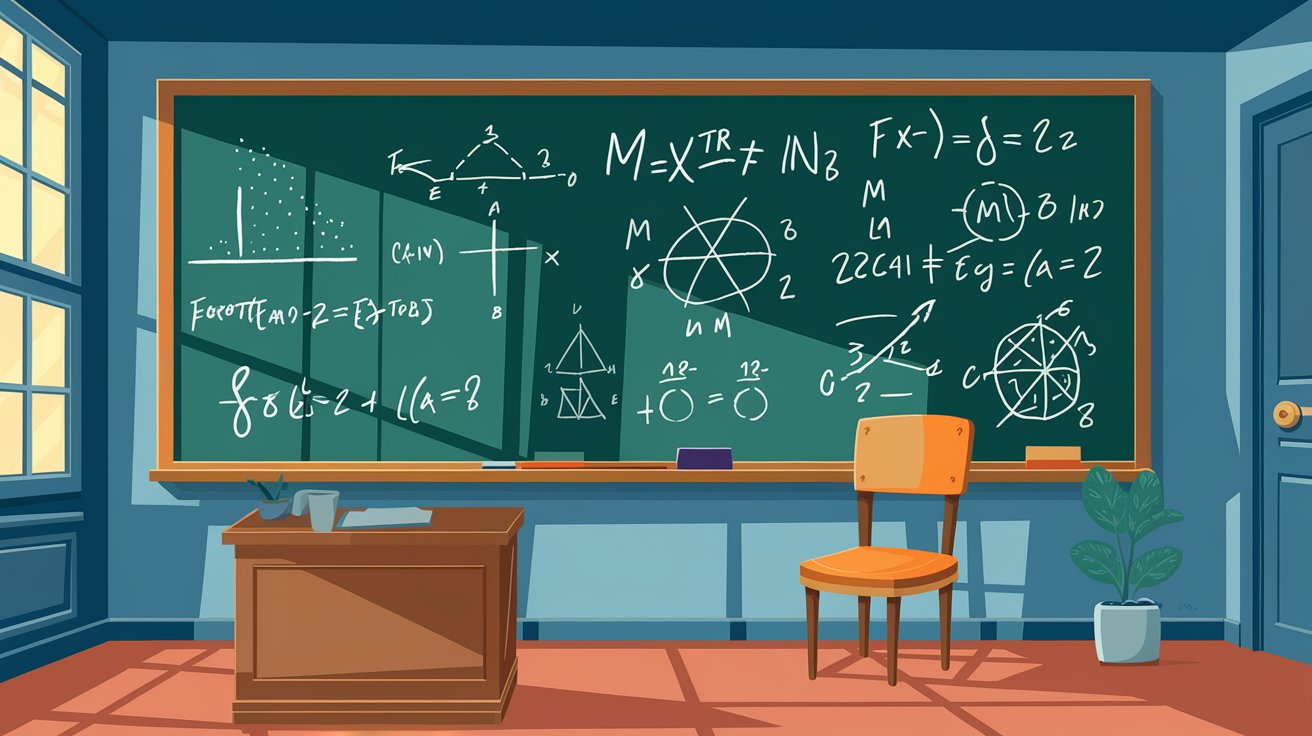
Mathematics is full of intriguing ideas, some of which have slipped into obscurity over time. These forgotten mathematical concepts, while not always in the spotlight, offer a fascinating glimpse into the depth and creativity of mathematical thought. From the paradoxical Banach–Tarski paradox to the quirky Infinite Monkey Theorem, these ideas challenge our understanding and spark curiosity. Why do some mathematical concepts fade into the background while others become fundamental? This article explores 30 such concepts, shedding light on their origins, significance, and why they might not be as well-known today. Get ready to rediscover the hidden gems of mathematics!
Key Takeaways:
- Uncover the Forgotten Wonders of Math Discover 30 intriguing mathematical concepts, from infinite monkey theorems to mysterious numbers stations. Math is full of surprises and mysteries waiting to be explored!
- Numbers Hold Surprising Secrets From the paradox of 0.999... equaling 1 to the enigmatic Belphegor's Prime, numbers have fascinating properties that challenge our understanding of math.
Forgotten Mathematical Concepts: A Journey Through the Unusual and the Fascinating
Mathematics is a vast field filled with intriguing concepts, some of which have faded into obscurity. These forgotten ideas still hold significant interest and importance. Let's explore 30 such fascinating mathematical concepts.
Infinite Possibilities and Paradoxes
Mathematics often delves into the realm of the infinite and the paradoxical, revealing surprising truths.
-
Infinite Monkey Theorem: Imagine an infinite number of monkeys typing randomly on typewriters. Eventually, they would produce every possible text, including Shakespeare's works. This theorem illustrates the power of randomness and infinite possibilities.
-
0.999… = 1: The idea that 0.999… equals 1 can be mind-boggling. This equality is based on the infinite series 0.9 + 0.09 + 0.009 + … which converges to 1, challenging our intuition about numbers.
-
Banach–Tarski Paradox: This paradox states that a sphere can be divided into five pieces, which can then be reassembled into two spheres identical to the original. It highlights the strange nature of geometric measure theory.
-
Gabriel's Horn: A shape with an infinite surface area but finite volume. This paradoxical figure demonstrates the counterintuitive aspects of geometry.
Curious Numbers and Their Properties
Numbers often have unique and surprising properties that make them stand out.
-
616 (The Real Number of the Beast): While 666 is famously known as the number of the beast, some biblical interpretations suggest 616 as the true number. This number has intrigued mathematicians and mystics alike.
-
65537-gon: A polygon with 65537 sides. It can be constructed using a compass and straightedge, showcasing the complexities of geometric constructions.
-
Belphegor's Prime: A prime number written as 1 followed by 13 zeros, 666, 13 zeros, and another 1. Its unique structure makes it a fascinating mathematical curiosity.
-
Graham's Number: An unimaginably large number introduced by Ronald Graham. It's so large that it's difficult to comprehend, representing the vastness of mathematical possibilities.
Intriguing Theorems and Postulates
Some theorems and postulates, while not widely known, have profound implications in mathematics.
-
Bertrand's Postulate: States that for any integer ( n > 1 ), there exists a prime number ( p ) such that ( n < p < 2n ). This theorem has significant implications for understanding the distribution of prime numbers.
-
Ramanujan Summation: A method developed by Srinivasa Ramanujan to assign values to divergent series. This technique extends the concept of summation and has important applications in number theory.
-
Tarski's Circle-Squaring Problem: A famous problem in geometry asking how to square a circle using only a compass and straightedge. It has been extensively studied in constructive geometry.
Mathematical Oddities and Fun Facts
Mathematics is full of oddities and fun facts that can make the subject more engaging.
-
Calculator Spelling: The sequence "5318008" on a calculator spells "BOOBIES" when turned upside down. This playful trick highlights the limitations of calculators.
-
The Complexity of Songs: Donald Knuth's treatise on the computational complexity of songs explores the mathematical aspects of music, revealing the algorithmic nature of compositions.
-
Erdős–Bacon Number: Combines degrees of separation from actor Kevin Bacon and mathematician Paul Erdős. It illustrates the interconnectedness of seemingly unrelated fields.
-
Sexy Prime: A prime number that differs from another prime by six. This concept helps study the distribution and relationships of prime numbers.
Paradoxes and Misconceptions
Some mathematical concepts challenge our understanding and reveal common misconceptions.
-
2 + 2 = 5 (Or Perhaps 1984): This flawed mathematical induction proof illustrates the dangers of incorrect reasoning. It also appears in George Orwell's "1984" as a symbol of truth manipulation.
-
All Horses Are the Same Color: Another flawed induction proof, showing the importance of careful analysis in mathematical reasoning.
-
Potato Paradox: States that if potatoes consisting of 99% water dry to 98% water, they lose 50% of their weight. This paradox highlights the counterintuitive nature of percentage changes.
-
Pi is 3: A common myth suggests that Japanese education redefined pi as exactly 3. In reality, pi remains an irrational number approximately equal to 3.14159, debunking the myth.
Unique Mathematical Concepts
Some concepts are unique and not widely known but hold significant interest.
-
Zero's Negative Flavor: In computing and statistical mechanics, zero often has a "negative" flavor. This concept is rooted in how these fields handle zero in various operations.
-
Almost Everywhere: In measure theory, this term describes a property that holds except for a set of measure zero. It's crucial for understanding functions and measures in analysis.
-
Almost Integer: A number very close to an integer but not quite. For example, ( e^{pi} – pi approx 20 ). This concept is used in numerical analysis and approximation theory.
-
Almost Periodic Function: A function close to being periodic but not quite. It generalizes periodic functions and is used in functional analysis and differential equations.
-
Extravagant Number: Describes numbers that are excessively large or complex. This term highlights the vast range of mathematical concepts and their applications.
-
Schizophrenic Number: A number exhibiting seemingly contradictory properties. This term describes numbers that defy intuitive expectations, showcasing the complexity of mathematics.
Mysterious and Enigmatic Concepts
Some mathematical ideas remain mysterious and enigmatic, sparking curiosity and speculation.
-
Cox–Zucker Machine: A mysterious device with no clear description. It has intrigued mathematicians and enthusiasts, making it a fascinating example of a forgotten concept.
-
Numbers Station: Mysterious radio broadcasts transmitting numerical sequences. These broadcasts have intrigued mathematicians and cryptographers, adding to their mystique.
-
Pointless Topology: A branch of topology studying spaces without points. Despite its name, it has significant applications in abstract algebra and theoretical computer science.
Fun Coincidences and Patterns
Mathematics often reveals fun coincidences and patterns that captivate our imagination.
-
Six Nines in Pi: The sequence "999999" appears 762 digits into pi's decimal expansion. This coincidence highlights the intricate and seemingly random nature of pi.
-
A Million Random Digits with 100,000 Normal Deviates: A book published in 1955 containing a million random digits and 100,000 normal deviates. It was pioneering in random number generation, providing a valuable resource for statistical analysis and simulation.
Rediscovering the Wonders of Math
Exploring these forgotten mathematical concepts reveals the depth and richness of math. From the Infinite Monkey Theorem to Tarski's Circle-Squaring Problem, each idea offers unique insights. They remind us that math isn't just about numbers; it's about understanding the world in unexpected ways. Concepts like Gabriel's Horn and Banach–Tarski Paradox challenge our intuition, while Ramanujan Summation and Bertrand's Postulate expand our knowledge. These ideas, though not always in the spotlight, play crucial roles in various fields. They also highlight the importance of rigorous thinking and the beauty of abstract thought. By revisiting these concepts, we can appreciate the creativity and innovation that drive mathematical discovery. So, next time you think math is just about solving equations, remember these fascinating ideas and let them inspire your curiosity.
Frequently Asked Questions
Was this page helpful?
Our commitment to delivering trustworthy and engaging content is at the heart of what we do. Each fact on our site is contributed by real users like you, bringing a wealth of diverse insights and information. To ensure the highest standards of accuracy and reliability, our dedicated editors meticulously review each submission. This process guarantees that the facts we share are not only fascinating but also credible. Trust in our commitment to quality and authenticity as you explore and learn with us.


